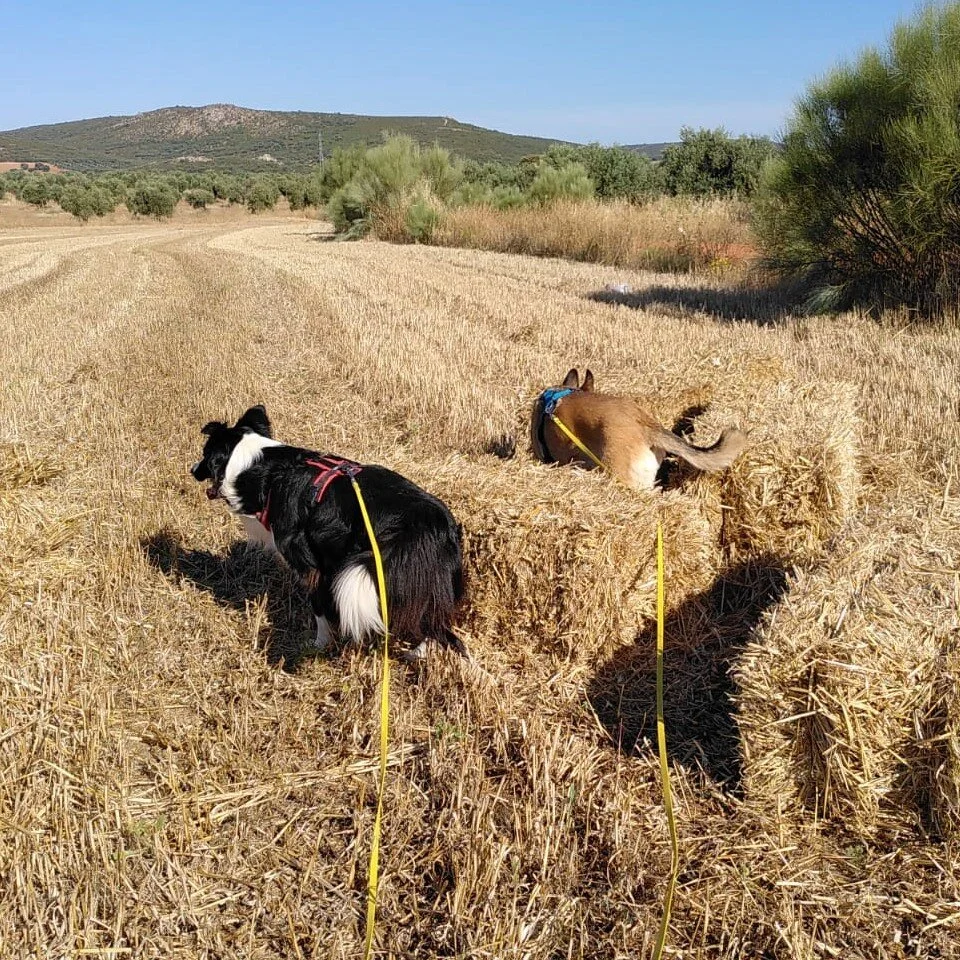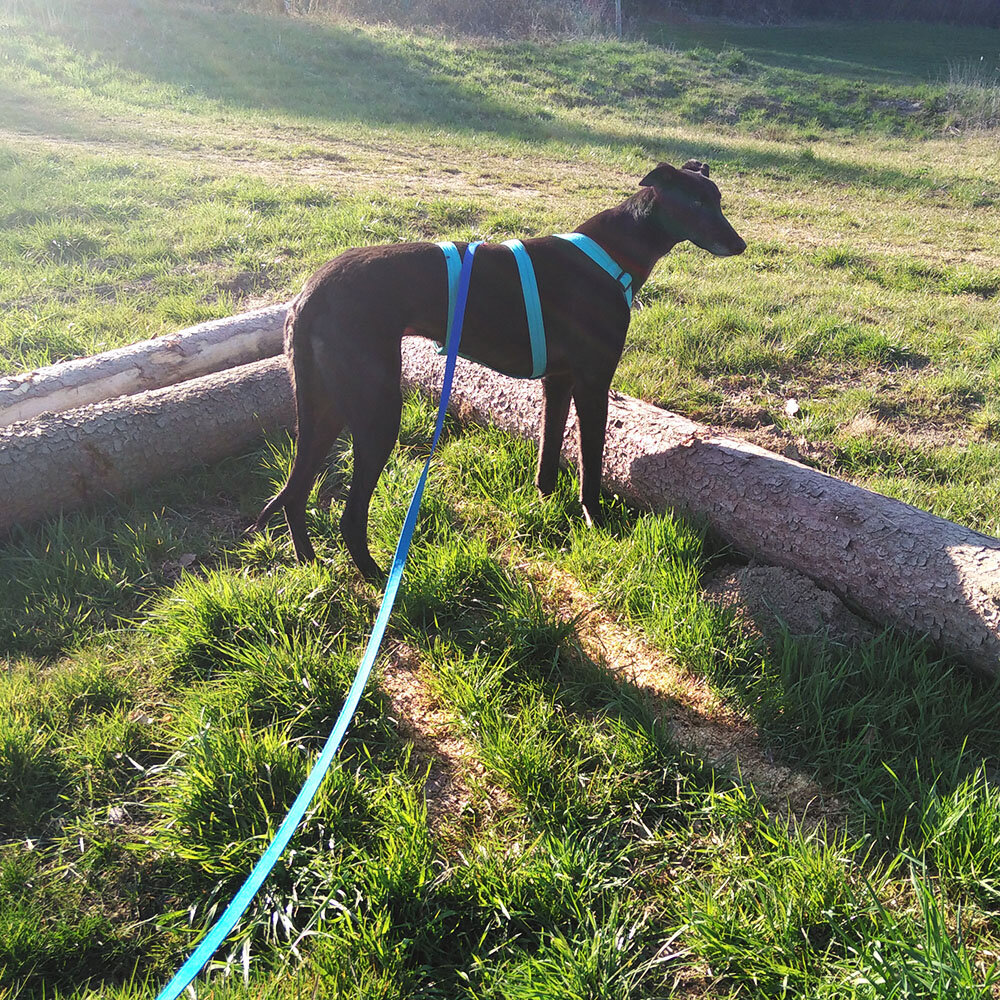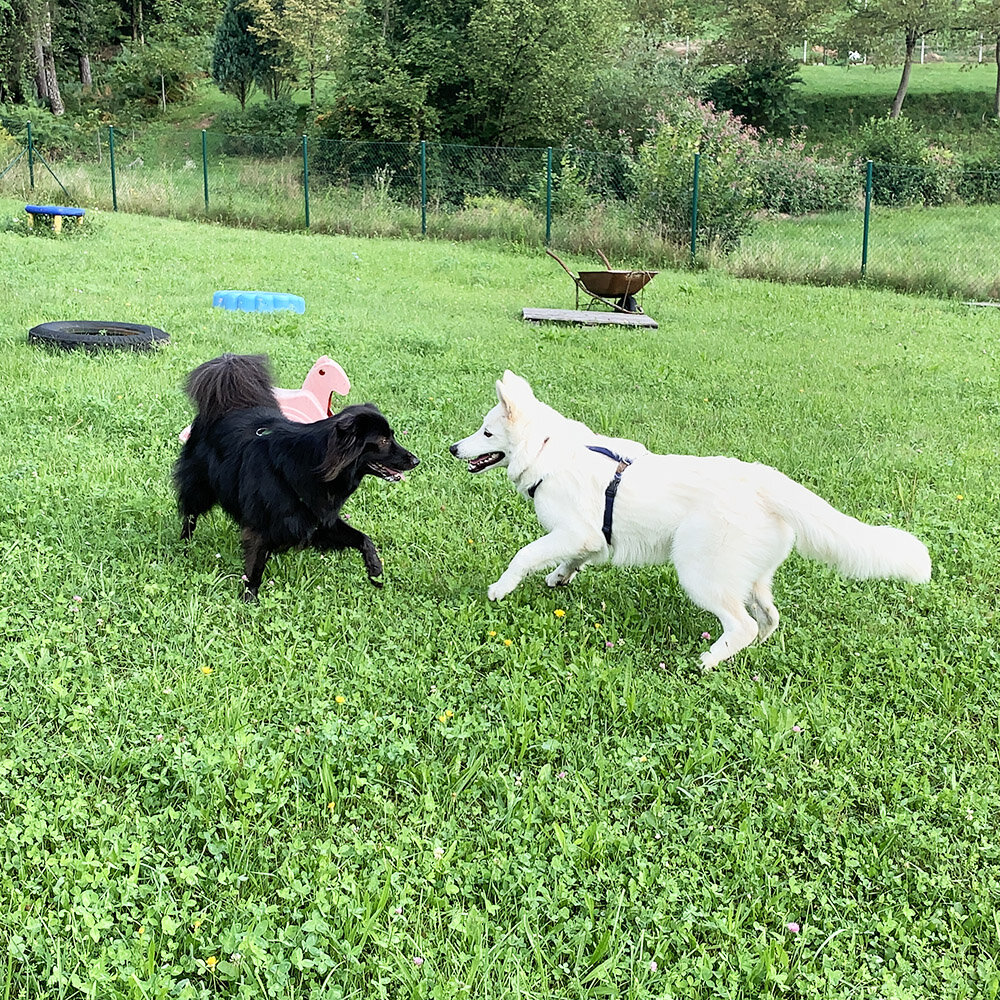What is healthy movement for your dog?
We are often asked how long a dog's walk should be, or, more generally, how much exercise dogs need. That is an important question, but there is another: what kind of exercise or movement is good for dogs and what is harmful?
The gait that builds muscle
Dogs have different types of gait. Going from generally slowest to fastest, these are walking, pacing, trotting and galloping. Which one would you say builds the muscle that keeps the body stable and the joints healthy?
Surprisingly. it's the slowest one - walking. When dogs walk, they move one paw at a time. The rhythm of the movement is 1-2-3-4 (as opposed to 1-2-1-2, which is true of trotting). The next time you are out for a walk, slow down and let your dog walk to build up important small muscles that will keep her body healthy and in good balance!
Varied terrain and varied movement
If possible, give your dog a chance to walk over different surfaces, like roots or vegetation. This way she will use small muscles that often get neglected. Moving her body in a precise and deliberate way will also benefit her mind. Moving in curves and over low obstacles is very good for dogs.
Playing with other dogs is another type of varied movement. As long as everyone is relaxed and the situation is safe, give your dog a chance to play. Play sessions should be short and sweet. They should end before dogs get too tired, since tired dogs tend to play roughly. Experienced dogs usually take breaks and stop by themselves, but youngsters and puppies might need a little help from you.
How about running?
If you have the chance to let your dog off leash in a safe area, she might choose to run a little. It's usually a lap or two, after which most dogs slow down to sniff and explore. This kind of running - off leash and by choice - is perfectly fine and dogs tend to enjoy it.
On the other hand, running alongside a person or even alongside a bicycle is not good exercise at all. It is harmful to dogs' health and may even cause or intensify behavioural issues! Running in this way forces dogs into monotonous, repetitive movement that is likely to result in pain and injury. The lack of choice, the release of stress hormones and the possible pain may influence dogs' behaviour in a negative way.
To sum up, let's offer our dogs the possibility of walking slowly over varied terrain, making curves and going over small obstacles. If possible, let them play with other dogs a little and run by themselves and by their own choice.




